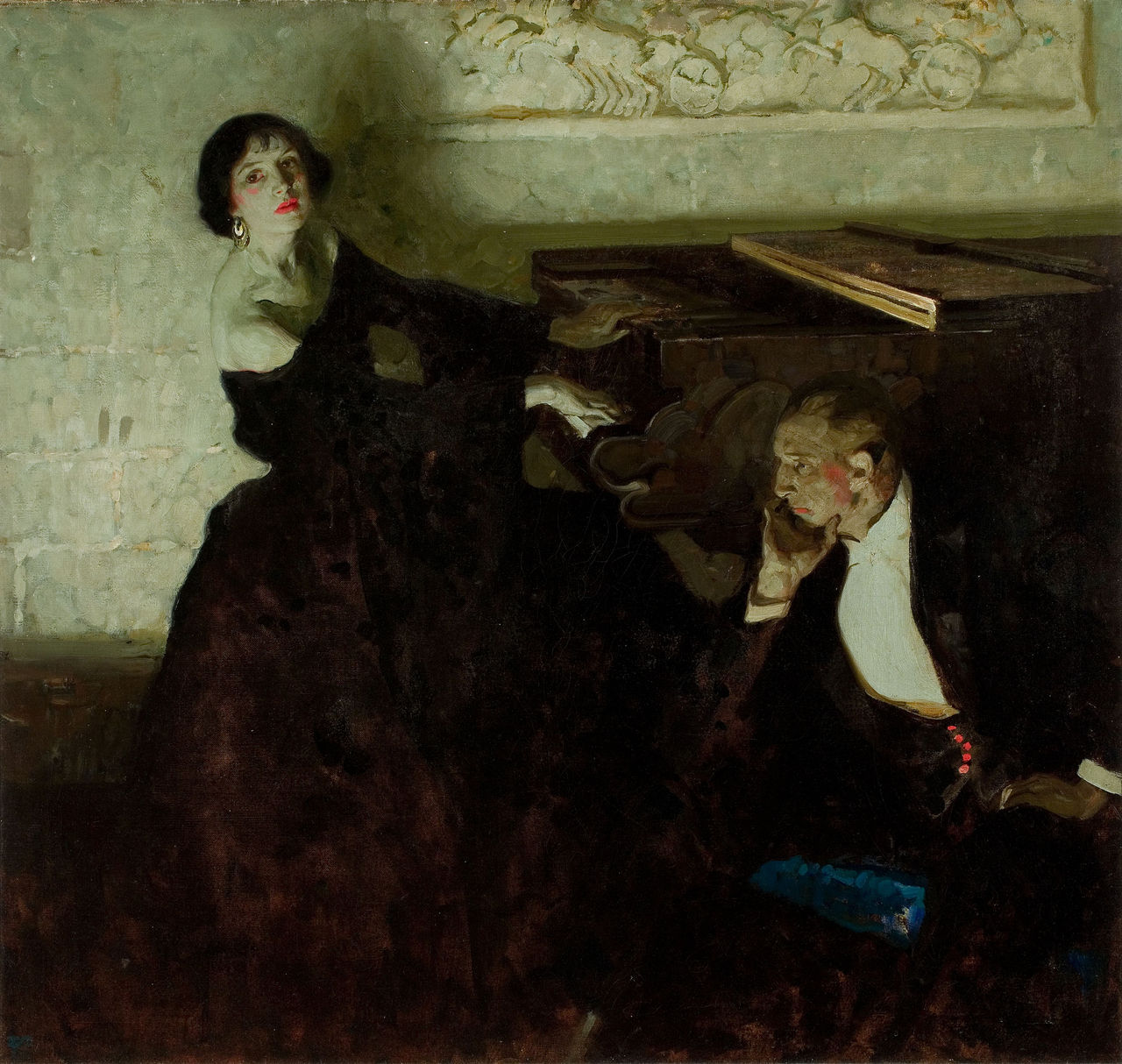Monday, April 10, 2017
Harold Speed on Unity and Variety
Harold Speed on Unity and Variety
 Today well cover pages 181-187 of the chapter on "Tone and Colour Design," from Harold Speeds 1924 art instruction book Oil Painting Techniques and Materials
Today well cover pages 181-187 of the chapter on "Tone and Colour Design," from Harold Speeds 1924 art instruction book Oil Painting Techniques and Materials. This is another very long section of the book that well have to break into parts.
Ill present Speeds main points in boldface type either verbatim or paraphrased, followed by my comments. If you want to add a comment, please use the numbered points to refer to the relevant section of the chapter.
 |
| Andrew Wyeth The Sleepers |
The distinction between expression and communication is an important one, since the latter requires someone to receive the message. Expression can happen when an artist is all alone on the beach writing something on the sand. One thing the Internet has given artists is the ability to see right away how their work is received by real people. I dont know if being conscious of the audiences reaction is a good thing or a bad thing, but it sure is a thing. Its hard to ignore the audience and I wonder how it affects us in the long run.
2. Natural appearance vs. rhythm
Speed is setting up a distinction between something that looks convincingly real and a something that uses design principles to have an effective emotional impact. These two objectives in painting arent necessarily in opposition. The way I think about it is that there are many kinds of realism, or many ways to paint something so that it looks convincingly real. You might for example focus on the texture or the atmospherics or the silhouette or the warm glowing colors, or whatever expresses your idea. And then there are all the qualities of paint handling. Each of us has to choose which type of realism best serves the idea.
3. Page 184, paragraph beginning: "It is not rather that...." Speed says: "We are continually seeking to transform the things of this existence into terms of this inner, more permanent realm."
Speed gets philosophical here, and the language is a bit difficult to unravel, but what hes saying is profound, connecting the world of our inner mental life with the external world that we perceive and interpret through art. Andrew Wyeth talks a lot about this. He doesnt head out looking for a scene to paint. He starts with an inner idea and builds it from the inside out. The result may be realistic to the eye, but it all starts with dreams and memories.
.jpg)
Tone Design
4. Flat tones create unity. A lot of light-to-dark modeling can create variety.
In the Raphael above, theres a lot of modeling within each form, and each form is distinguished from its surrounding background, creating a choppy effect. Thomas Hart Benton also has a tendency to define his forms all the way around. The tones are much more unified in the Cornwell below. One is not necessarily better than the other.
 |
| Image: Dean Cornwell |
5. For broader effect, "assemble the light masses together and unite the dark masses also, so that the light and dark tones, instead of playing together throughout the picture, are divided and grouped separately."
Hey, this sounds like shapewelding, something that I discussed in a previous post.
Speed says: "This is why portrait painters so favour a dark background, as it so easily makes the light head the dominating interest in the picture."
 Next week—Well continue on page 187 with his discussion of gradated and flat tones.
Next week—Well continue on page 187 with his discussion of gradated and flat tones.-----
More on Andrew Wyeths thinking about art in the two books by Richard Meryman: Andrew Wyeth: A Secret Life and Andrew Wyeth: A Spoken Self-Portrait
and Andrew Wyeth: A Spoken Self-Portrait
In its original edition, the book is called "The Science and Practice of Oil Painting ." Unfortunately its not available in a free edition, but theres an inexpensive print edition that Dover publishes under a different title "Oil Painting Techniques and Materials
." Unfortunately its not available in a free edition, but theres an inexpensive print edition that Dover publishes under a different title "Oil Painting Techniques and Materials (with a Sargent cover)," and theres also a Kindle edition.
(with a Sargent cover)," and theres also a Kindle edition.
----GurneyJourney YouTube channel
My Public Facebook page
GurneyJourney on Pinterest
JamesGurneyArt on Instagram
@GurneyJourney on Twitter
Available link for download